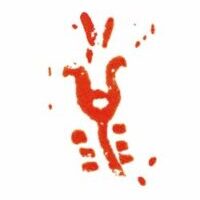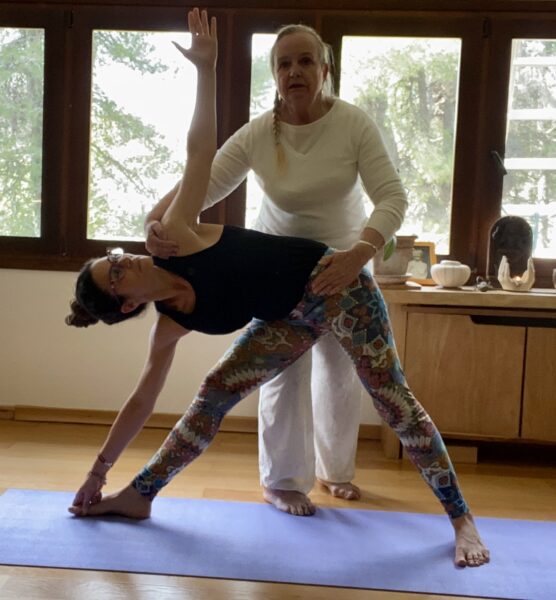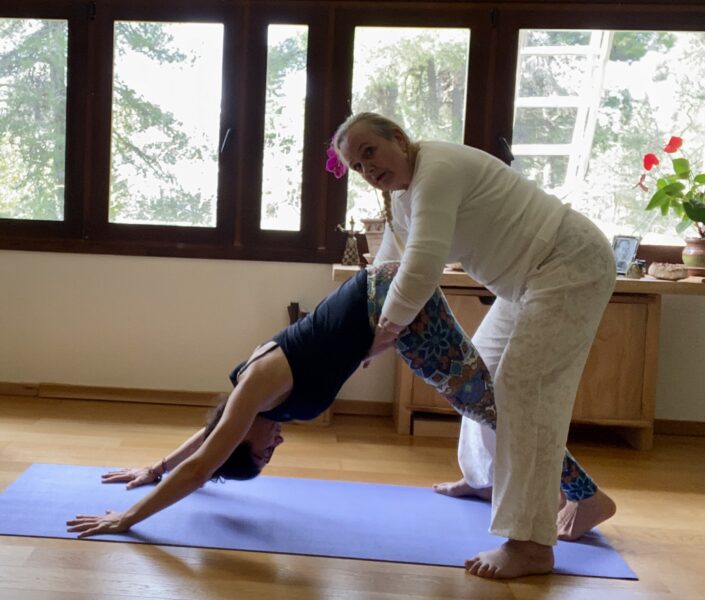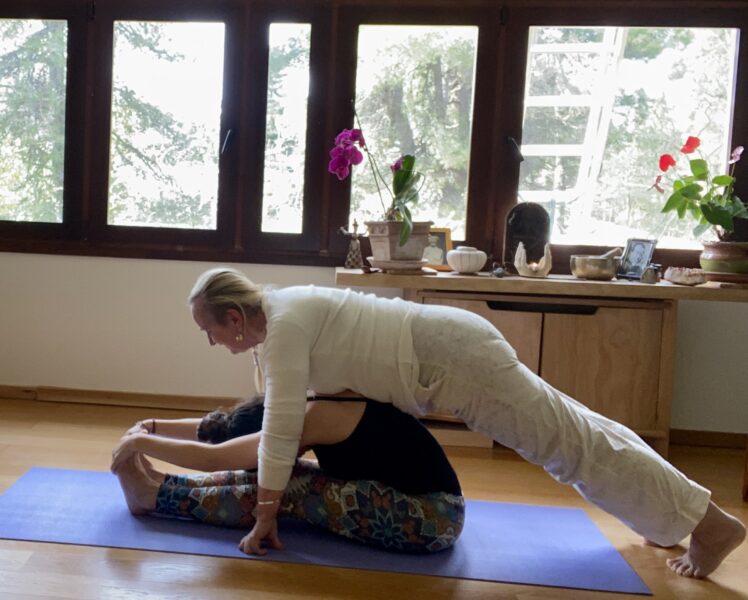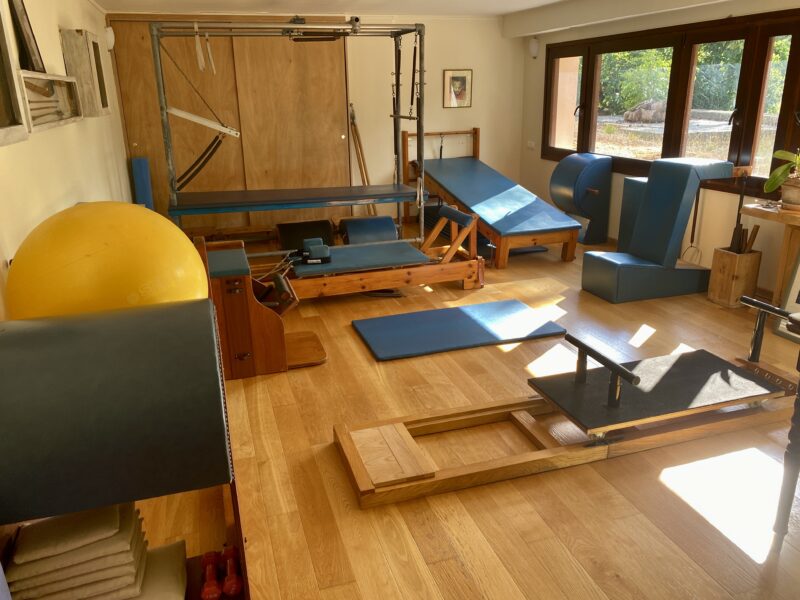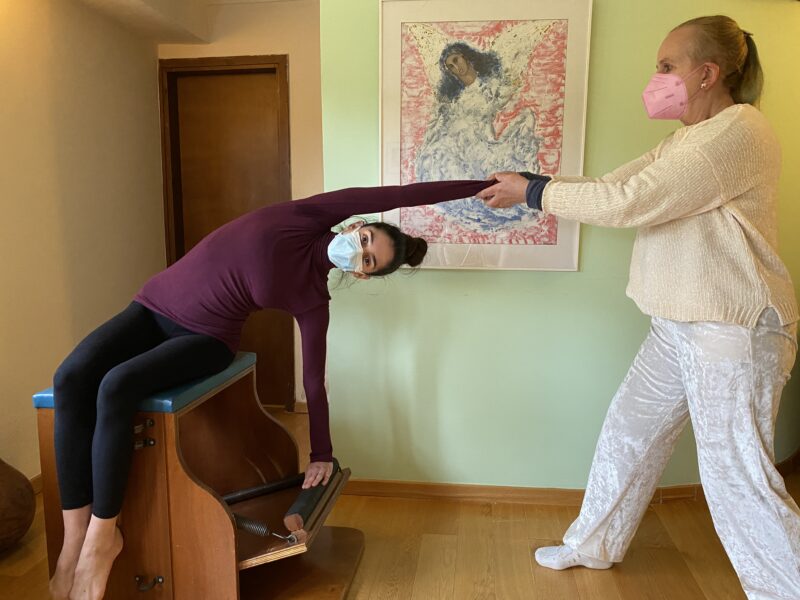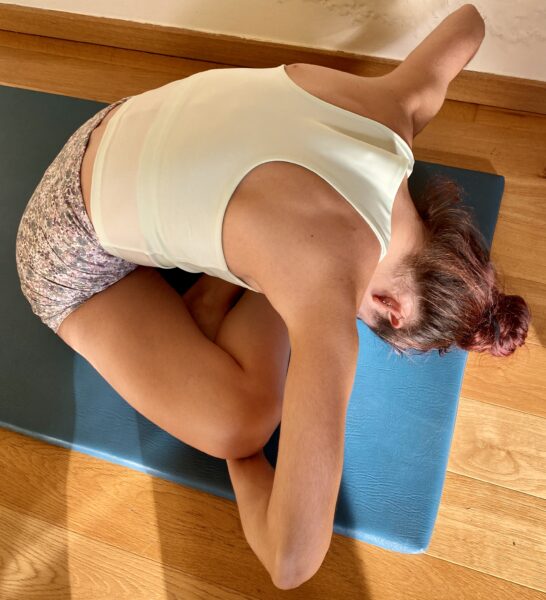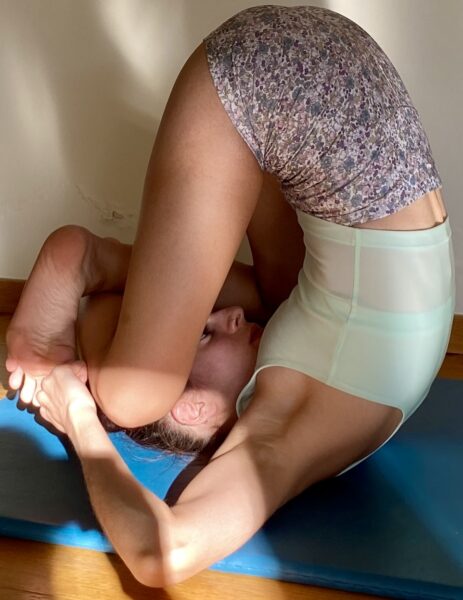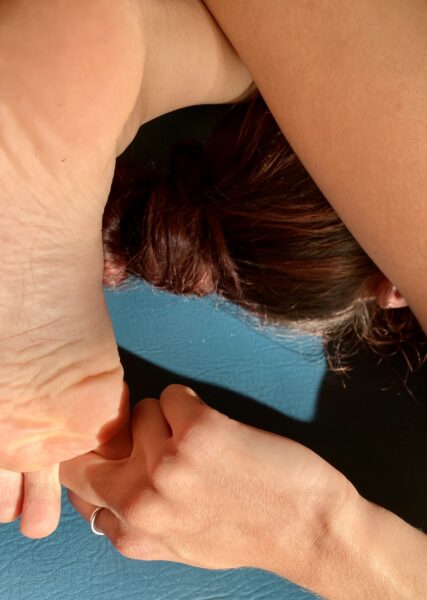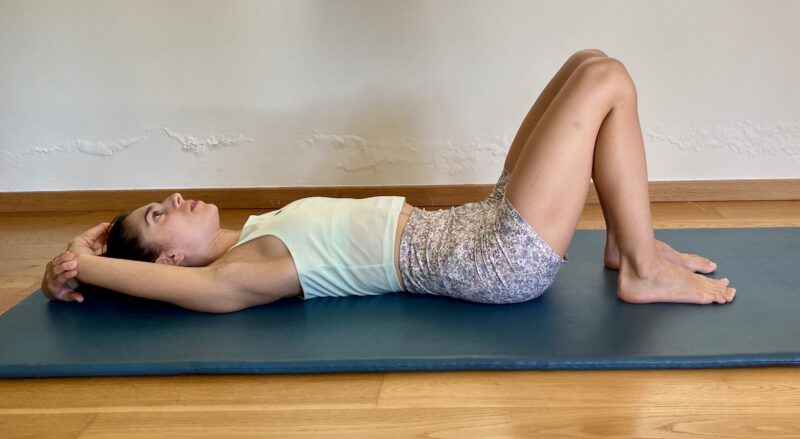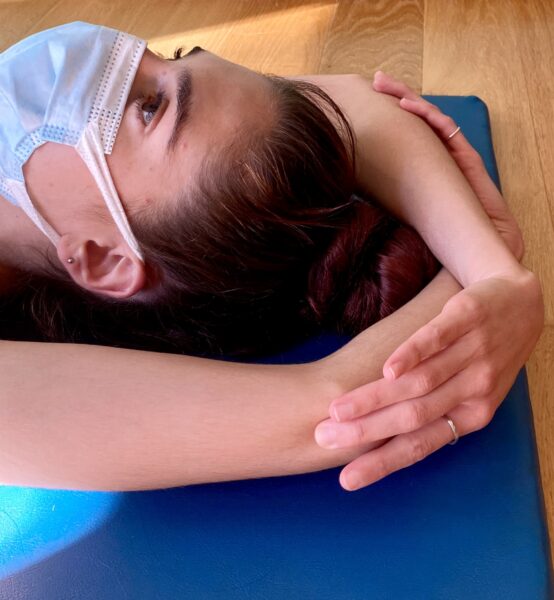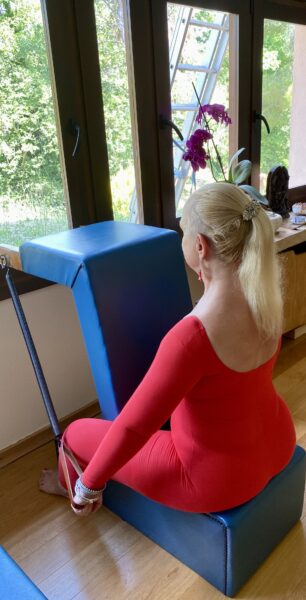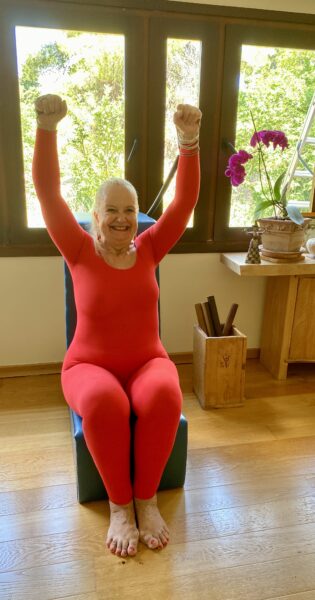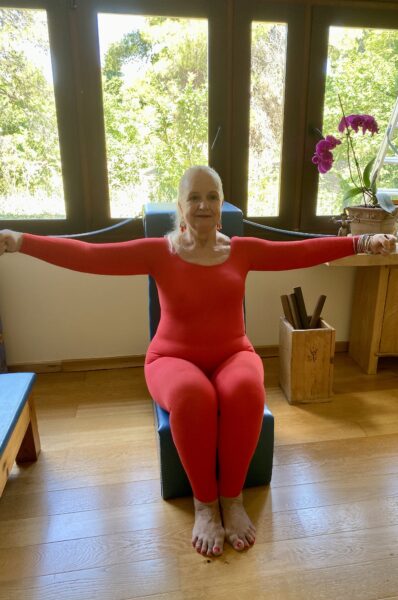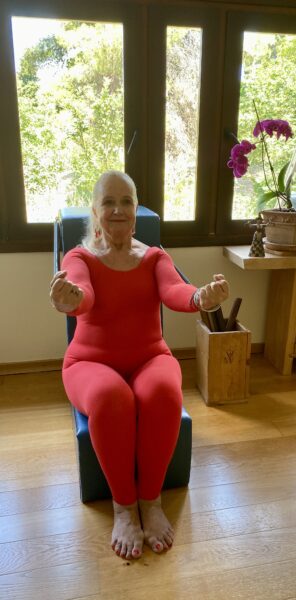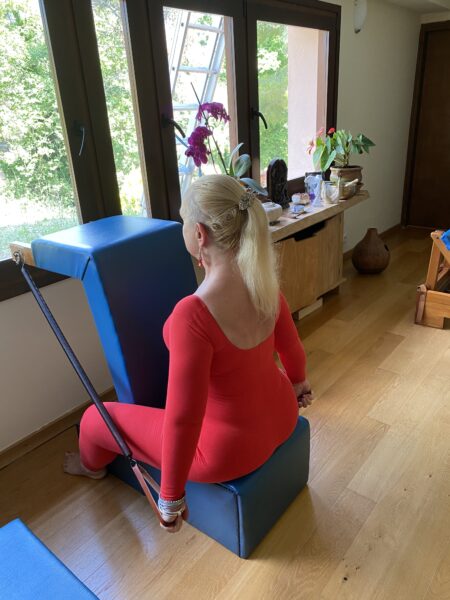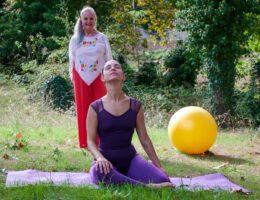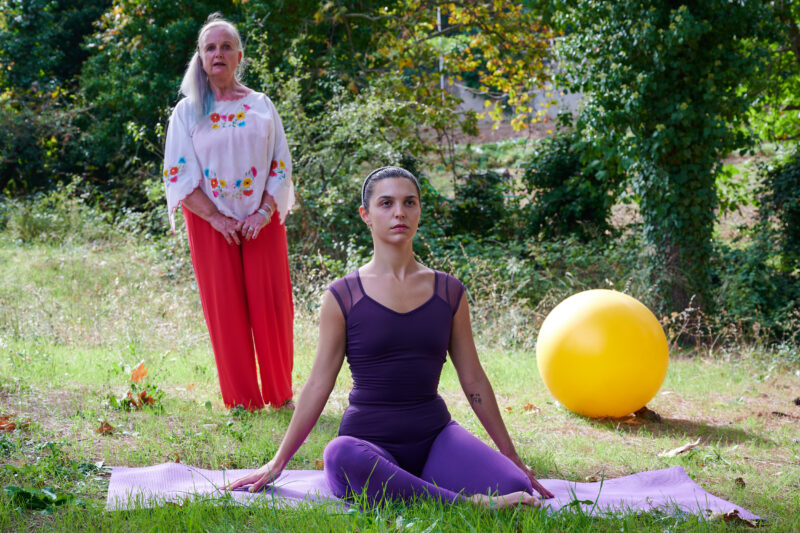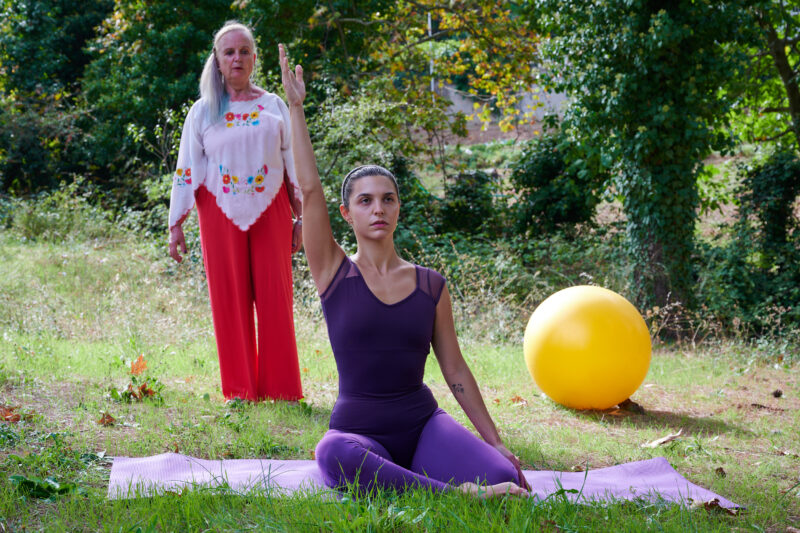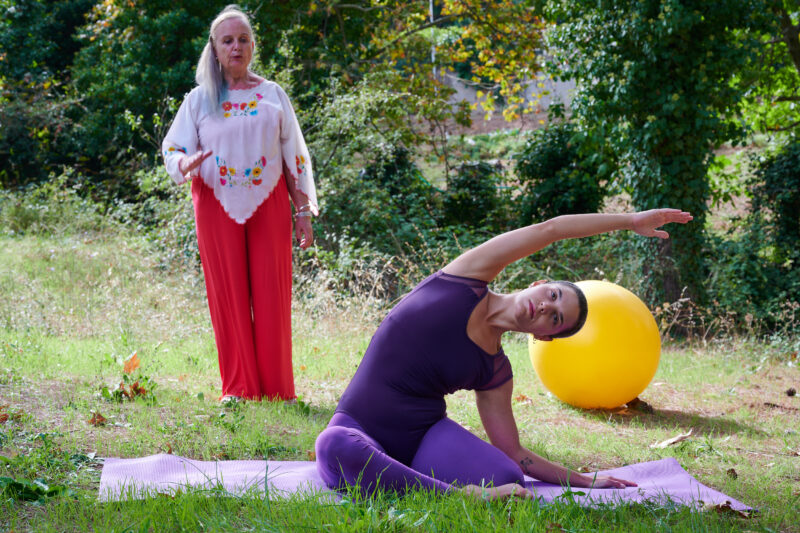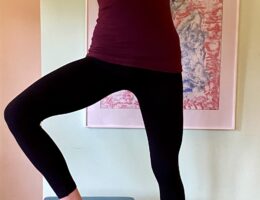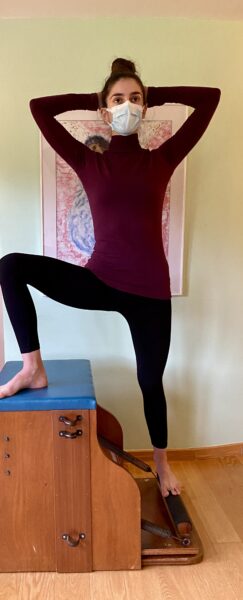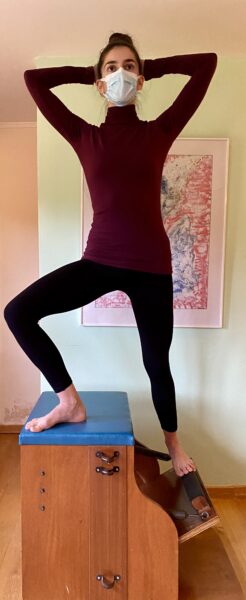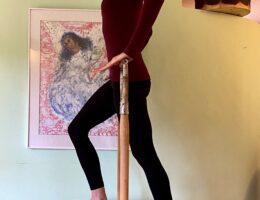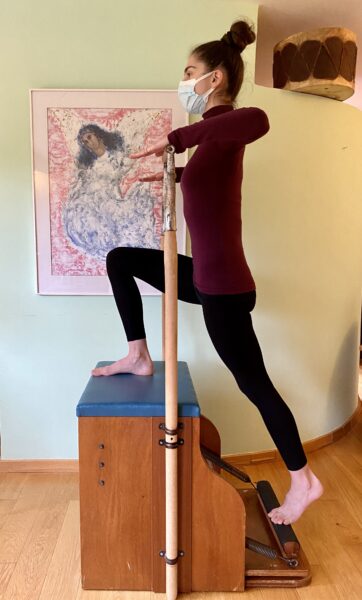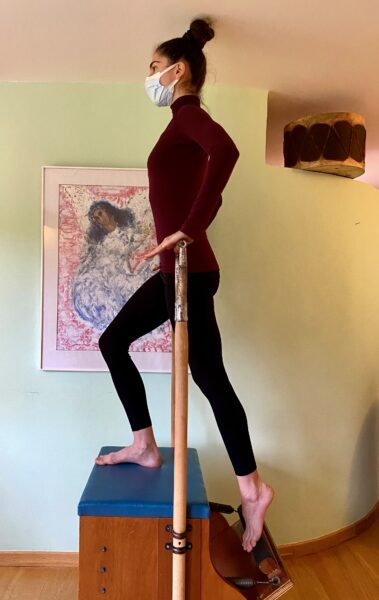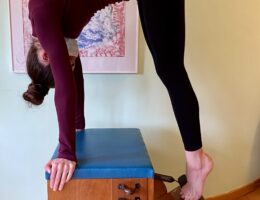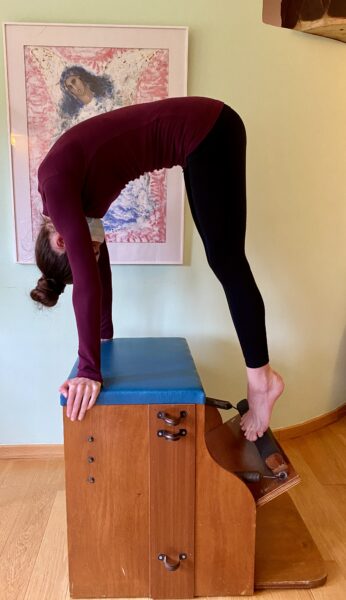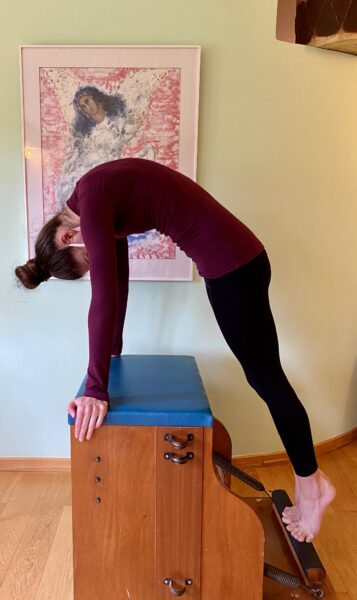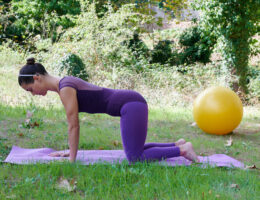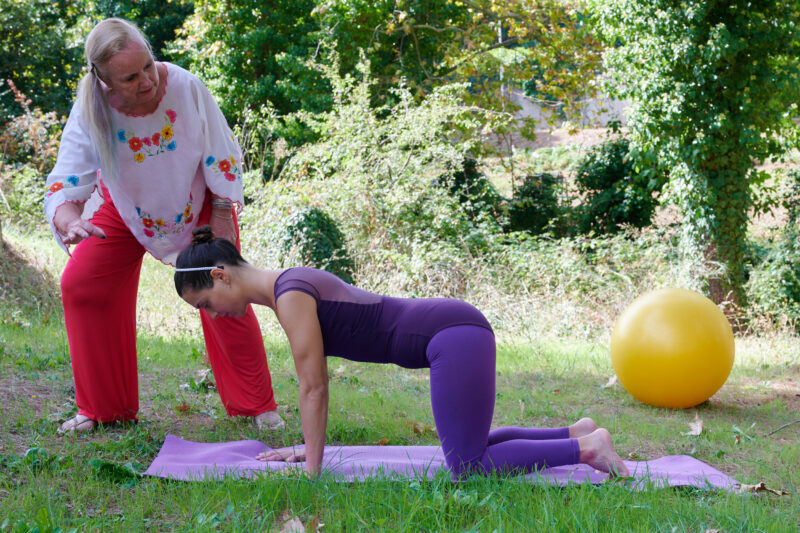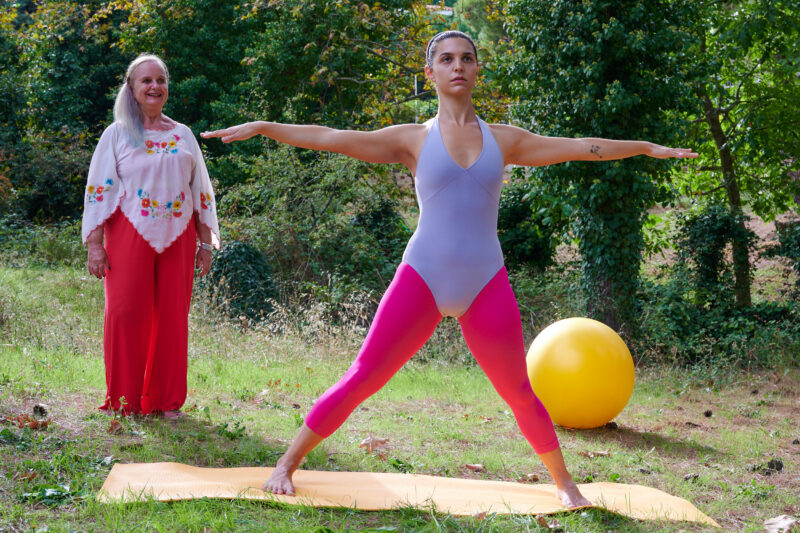The Bow Pose is wonderful. Please refer to my blog about the third position of the spine or third spinal succession https://jennycolebourne.com/the-third-spinal-succession/. it is essential that you understand all the details about how to safely enter an arched spine. Doing it in the right way is deeply healing. If we do it with a lack of attention to detail, it can cause strain in the spine.
BENEFITS
The Bow Pose is beneficial for all humans.
The Bow Pose is excellent for anyone who has tension, or strain, in the neck and the upper back. It is. super for people that have kyphosis.
It is essential, in our practice, whether our practice is Pilates, or Hatha Yoga, or another form of movement, that we have a practice that balances movements that are curling the spine with movements that are arching the spine. We should include sideways bending of the spine and spinal twisting. In effect the spine enjoys, and is healthy, and feels good, when it’s able to move easily in all directions. The vertebrae, and the discs between them, are like individual joints. The discs between the vertebrae are strong. They have tone and they also need to be flexible. There shouldn’t be any tightness in the discs, they should be available to movement.
The Bow Pose is excellent for people that have backache, not only because of the arching of the spine, but also the gentle stretch in front of the thighs, which leads to a stretch in front of the hip joints, which leads to a gentle opening of the psoas muscle. This muscle can become very restricted and tight through trauma, through shock. It is an archetypal muscle. It also becomes shortened through our lifestyle which often, today, involves us sitting a lot.
Everyone should be conscious of leg alignment. This is particularly true for people that have knee pain. Please refer to my blog on leg alignment https://jennycolebourne.com/good-leg-alignment-is-essential-for-everyone/. The Bow Pose can be adapted. There are easier variations. I will write about this in a future Blog.
STARTING POSITION.
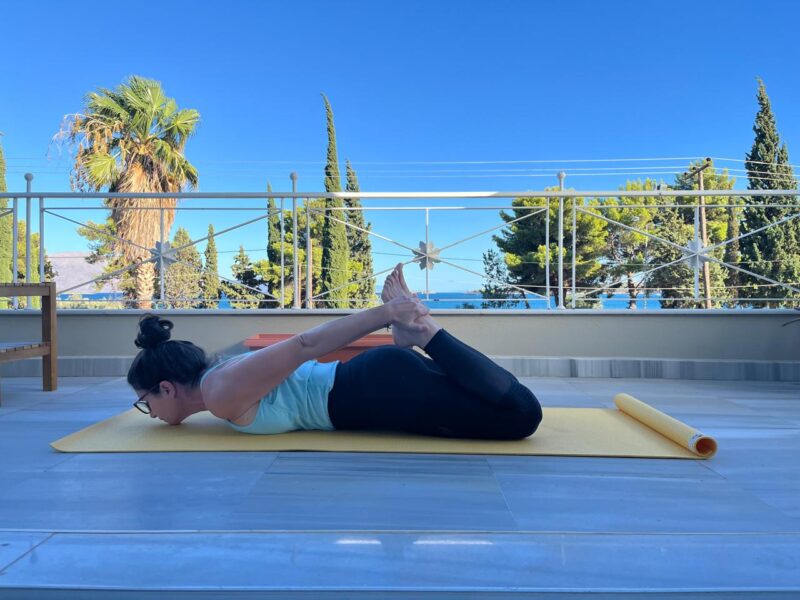
Remember that if you set up your starting position carefully, the rest of the exercise or Asana will be even more effective.
Lie on your tummy with the arms resting down beside you. Have the legs a little bit apart. Turn the head to one side and relax. For those of you familiar with Yoga, this is Savasana on the tummy. The elbows are.slightly bent. Relax around the shoulder blades. Pay particular attention to the space between the shoulder blades. Really soften in that space. The lower back and the buttocks are completely relaxed. The legs can roll in any direction, whatever is comfortable for you. The hip joints are very relaxed. Surrender to gravity.
BREATHE EASILY AND DEEPLY
In a very, very relaxed way, bend the knees, so that the feet come towards the buttocks. Remember the joints are soft, available, for movement. Reach back and take a hold of your ankles with the palm of your hand. Keep the fingers of the hand softly together. You want to create support with the palm of the hand so your feet can literally rest in your hands. The arms throughout the posture remain very relaxed.
Bring the chin onto the floor, the pressure that this creates in the jaw is actually good for us, because as we lift our head, the pressure dissipates and stimulates the jaw to relax. Relaxing the jaw is important because any tension in the jaw, is related to tension in the neck.
The very first movement that you make is, again, very soft. Send your shoulder joints, gently back of your collarbone. It is a small movement but you will feel your shoulder blades automatically gently slide closer to one another. Concentrate on relaxing that space between the shoulder blades. You won’t be forcing the shoulder blades together. The movement will happen naturally, you just cooperate with that, by softening so that the movement can happen fully. A space will open up between the end of the collarbone and the shoulder joint. This small space brings so much relief when we open it. We actually can feel the articulation in the shoulder joint. Often we have so much tension in these areas that we can no longer feel the articulation. Opening this space is very relieving, especially for people with kyphosis. it is also extremely relieving and important for people with shoulder pains or problems such as frozen shoulder for example. As you move into this posture maintain this opening. Be conscious of it. It is a very beautiful space in the body.
MOVING INTO THE ARCH

Start the third spinal succession from the bottom of the spine. Refer to my blog for lots of detail. Your focus will be on the front edge of the spine which actually relates to a very important energy channel, or Nadi, which is called the Shushumna. Anatomically focusing up the front edge of the spine starting at your tail, (which comes halfway down the crack of the buttocks. It is lower than many of us think), or coccyx, send one vertebra, at a time, up and back. The spaces, or discs, in between each vertebra, open like a fan. In order for the arching to be effective, the back body needs to be as soft as possible, in order to permit the opening in the front body. This focusing up through the front of the spine, starting from the front of the tail, then going through the front of the sacrum then through the front of the fifth lumber, and so on, means there is a delay, a small delay but eventually that process results in the raising of the head and then the lifting of the upper back. The arch is distributed throughout the spine. There is no strain.
When you have reached the peak of your arch, feel the front of the torso firmly rooted. Use gravity, feel like you have roots in this area, the more you feel gravity, the more you feel your roots, the more the legs will float up.
I suggest that you stay up for five breaths. Please don’t strain. if you are not so strong, stay for less your strength will easily grow.
Continue focusing up through the spine, continue re-affirming the spinal succession, starting at the front of your tail, sending one vertebra up and back, and then the next, reaffirm space between each vertebra opening like a fan.
SOFTEN THE BACK OF THE BODY.
Continue your process of softening between the shoulder blades See how soft you can make that space.
The breath really helps us. Take rich breaths. Your breath well deepen with your practice. it is always essential that we do not force but exercise practice in a way that is appropriate for us.
It is balance between not straining pushing tensing being competitive and on the other hand not being too lazy, being focused. it’s a balance that we all seek to find. The minute you find yourself tensing, or being critical about yourself, let go. It is not helpful.
The first and most important focus on the spinal succession. We keep doing that. At the same time because human beings are amazing and we can multi task.
USE THE BREATH TO DEEPEN THE POSTURE.
Let me be clear when you do this. The arch in the spine with each breath gets deeper. If you feel like your arching is lessening, then you haven’t quite achieved, what we are looking for. Keep searching, keep exploring. It’s fine. It takes us time to realise something. Just be aware that utilising the breath, deepens the arch.
USE BREATH AND GRAVITY
On the in breath we consciously lift the thorax up and back, on the out breath we can think about lifting the feet even higher. This means that whatever part of our torso is on the mat, tis more rooted, more surrendered to gravity. Gravity has an energy, the more we feel the roots, the more we will eventually feel an energy come back to us from gravity, sending us up. This is the ballon that you see when dancers jump and i it looks like they floating the air. It looks like there’s a pause, suspension, before they come down. They are using gravity. We use gravity to go higher into posture.
ROCKING.
Eventually, by practising and exploring this movement of the breath, the movement will turn into a rocking. When you take the in breath, the spinal succession, the lifting our up and back of the rib cage, will take you eventually all the way back to the front of your thighs. And the out breath, as you send the legs up, will bring you all the way to your chin. Let me stress this does not happen through you forcing and pushing, it happens through the spinal succession, and through utilising a rich breath. Be a little patient with yourself. Stay true to the movement and the breath. stay true to not straining or pushing.
THANK YOU
Marina Selini Katsaiti kindly shared these beautiful photos.
She studied yoga with me from her student days, and followed two of my teacher training courses. One was a specially designed dynamic course. You will be hearing more about her in a series I am planning featuring some of my yoga students, and how yoga has influenced their lives.
Marina lives in Galaxidi, Greece.
She teaches yoga, is a university professor, has written a book, as well as writing for several publications.
